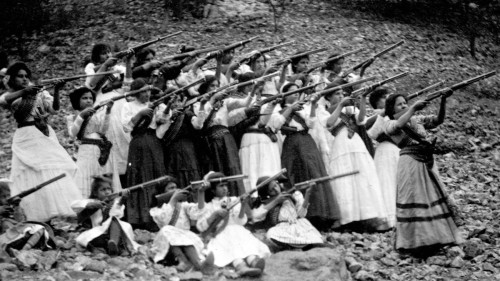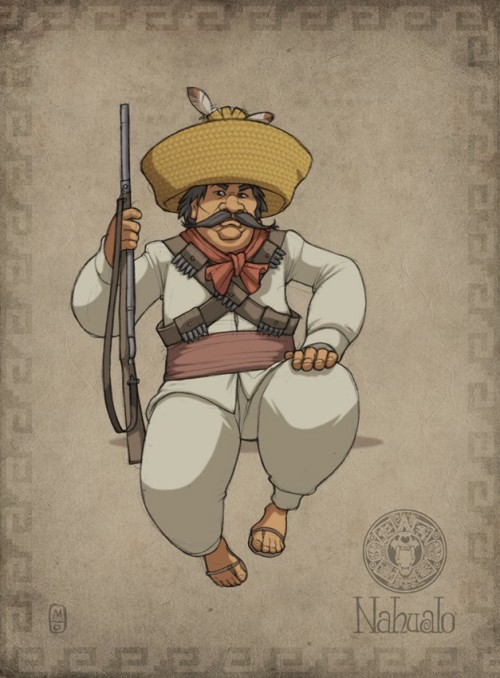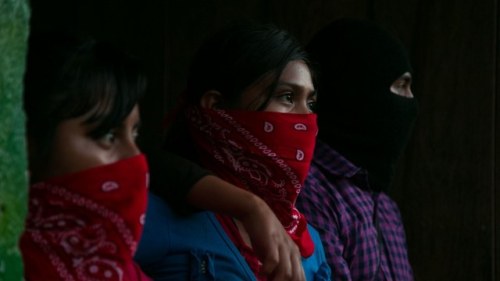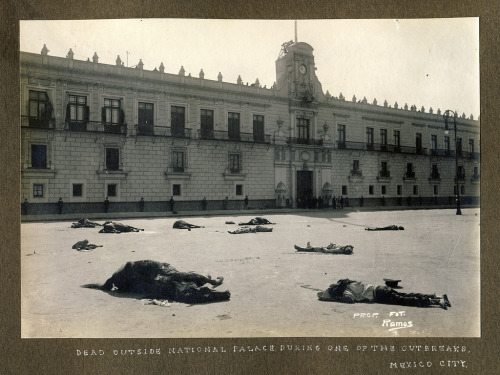#mexican revolution
Jacinto Trejo.
(1870-?)
Jacinto was a nahual who protect the people of Jojutla, Morelos, in charge of defending the community of evil spirits.
He joined the revolutionary forces in the south after a police patrol rural, influenced by mesmerists vampires, kill his eldest son.
While nahuales not usually interfere directly in the events of non-magical world since the spanish conquest , Jacinto has been one of the few exceptions to the rule.
His fate is unknown, some say that vampires caught him and kill him, but others argue that his family run away in the mountains to lead a quiet life until the end of their days.
Post link
The Zapatistas Have Been Revolutionary Force in Mexico for Decades
It was New Year’s Day of 1994. As dawn was about to break, a group of indigenous Mayan guerrillas launched a coordinated attack on cities and towns across the southern state of Chiapas, Mexico. They called themselves the Zapatista Army of National Liberation (EZLN) and wore black ski masks and red paisley bandanas known as paliacates.
The United States had just signed the North American Free Trade Agreement, which was supposed to decrease trade barriers and increase business investment between Canada, the U.S., and Mexico. It would also flood Mexico with imported corn, which the Zapatistas and other subsistence farmers believed would be their death, quite literally, and said so.
The Zapatistas, armed with machetes and antiquated rifles, took the municipal palace of the quaint mountain city of San Cristóbal de las Casas. It is estimated that between 600 and 2,000 troops, of humble farming backgrounds and largely between 18 and 30 years old, almost all indigenous Mayans from the state of Chiapas, participated and read a declaration of war from the Lacandon Jungle, proclaiming “Ya basta,” which translates to “Enough is enough.” They declared war on the army, the state and federal government, and the Institutional Revolutionary Party, which had been in power for 65 years.
Post link
Mexican Revolutionary Petra Herrera Posed as a Man to Fight for Her Country
In 1998, Disney released its Oscar-nominated film Mulan, an animated movie that followed the heroic adventures of one fictional woman who took her father’s place in the Chinese Imperial Army. In changing her name, training with the troops, and disguising herself as a male soldier, Mulan took actions that might be far from reality, but her story is eerily similar to that of a real Mexican heroine: Petra Herrera.
Unlike Mulan, Herrera’s story isn’t filtered through rose-colored lenses. There is no happy ending, few history books that remember her heroic actions. But Herrera’s valiance and skills as one of the Mexican Revolution’s most successful soldaderas are an example of the bravery and sacrifices women during this time made to change the history of Mexico’s politics — and should not be forgotten.
The year was 1910, and revolutionaries across Mexico were rising up to fight against elitist dictator Porfirio Díaz’s corrupt government. It would be a decade-long bloody civil war that would claim the lives of an estimated 1.5 million people. Herrera herself was killed during that time.
Post link
The Real History of Las Soldaderas, the Women Who Made the Mexican Revolution Possible
OG History is a Teen Vogue series where we unearth history not told through a white, cisheteropatriarchal lens. In this installment, Teen Vogue’s Marilyn La Jeunesse explains the history of Las Soldaderas, a group of women fought in the Mexican Revolution.
In the 2006 film Bandidas, Penélope Cruz and Selma Hayak’s characters, with their waist-cinching corsets, plunging V-neck blouses, cowboy hats and revolvers, are the stereotypical epitome of what a Latinx woman — specifically Mexican women — are supposed to be: sexy and dangerous. This contradicting characterization of strong Latinx women has become the norm in Hollywood, but the imagery was inspired by something entirely different: Las Soldaderas, the female soldiers who made the Mexican Revolution possible.
InNovember 1910, Mexico was plunged into a near decade-long war that pitted the federal government, run by dictator Porfirio Díaz Mori, against thousands of revolutionaries from varying factions. The Revolution was all-encompassing; everyone was expected to join the cause, and those who didn’t were forced to flee the country.
For the revolutionaries, the war was an opportunity to overthrow the outdated class system put in place by the Spanish elite. These revolutionaries saw it as a time for Mexico to reward the people who worked the land, not the other way around: a war for the mestizos; a war for the indigenous; and a war for the poor. But neither side could have endured for nearly 10 years without the dedication of Las Soldaderas.
Although not much is known about the demographics of Las Soldaderas, it is believed that a majority of these female soldiers were in their late teens and early twenties, and involved women of various ethnicities, including Afro-Mexicans and people of Spanish descent. As outlined in a 2009 scholarly article by Delia Fernández, now an assistant professor of history and core faculty in Chicano Latino studies at Michigan State University, women like Señora María Sánchez, Señora Pimental, and Petra Herrera — who fought as “Pedro” — showed that women could hold their own amid a bloody civil war. These soldiers fought on all sides, with many elite women joining the federales ranks and others joining different revolutionary leaders, like Emiliano Zapata, Pancho Villa, and Venustiano Carranza.
Post link
The dead outside National Palace during one of the outbreaks of the Mexican Revolution, Mexico City, c. 1913
Source:Southern Methodist University, Central University Libraries, DeGolyer Library.
Post link







